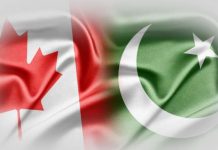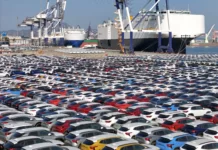There are, very basically speaking, two different tools at the disposal of any government to manage the economy. The first is fiscal policy, which essentially is how the government chooses to implement and collect taxes and then spend them. It is a pretty simple operation. The government needs money, and it gets it through taxation. The more it is able to collect, the more it can spend (or save).
And then there is the second tool. Monetary policy. Economists will lecture you for hours about the importance and nuance of how a country’s monetary policy is controlled by its central bank or federal reserve or whatever terminology a state has for its banking regulator. But essentially, monetary policy is essentially a massive lever. Pulling it can either increase or decrease the interest rate, thus determining how cheap or expensive it is to borrow.
The trick that every government has had for the past century has been balancing these two sides. In countries like Pakistan, where debt obligations are overwhelming, governments often respond by trying to completely control and dominate both these tools.
Pakistan stands as a stark example of how this situation can deteriorate if left unchecked. This phenomenon has become increasingly pronounced in emerging economies where the line between fiscal and monetary policy grows increasingly blurred, often at the expense of economic stability and growth potential.
Between fiscal years 2022 and 2024, Pakistan’s economic landscape has been particularly challenging, with domestic debt forming a significant portion of the government’s total liabilities.
This predicament has forced three major consequences upon the country’s economic decision-makers:
- Record-high interest rates to protect the currency and control inflation
- Paralysis of the financial sector leading to private sector credit crowding out
- A broader loss of confidence among investors and workers
The ripple effects have been felt across all sectors of the economy, from small businesses struggling to access credit to large corporations facing increased borrowing costs. The content in this publication is expensive to produce. But unlike other journalistic outfits, business publications have to cover the very organizations that directly give them advertisements. Hence, this large source of revenue, which is the lifeblood of other media houses, is severely compromised on account of Profit’s no-compromise policy when it comes to our reporting. No wonder, Profit has lost multiple ad deals, worth tens of millions of rupees, due to stories that held big businesses to account. Hence, for our work to continue unfettered, it must be supported by discerning readers who know the value of quality business journalism, not just for the economy but for the society as a whole.To read the full article, subscribe and support independent business journalism in Pakistan

























